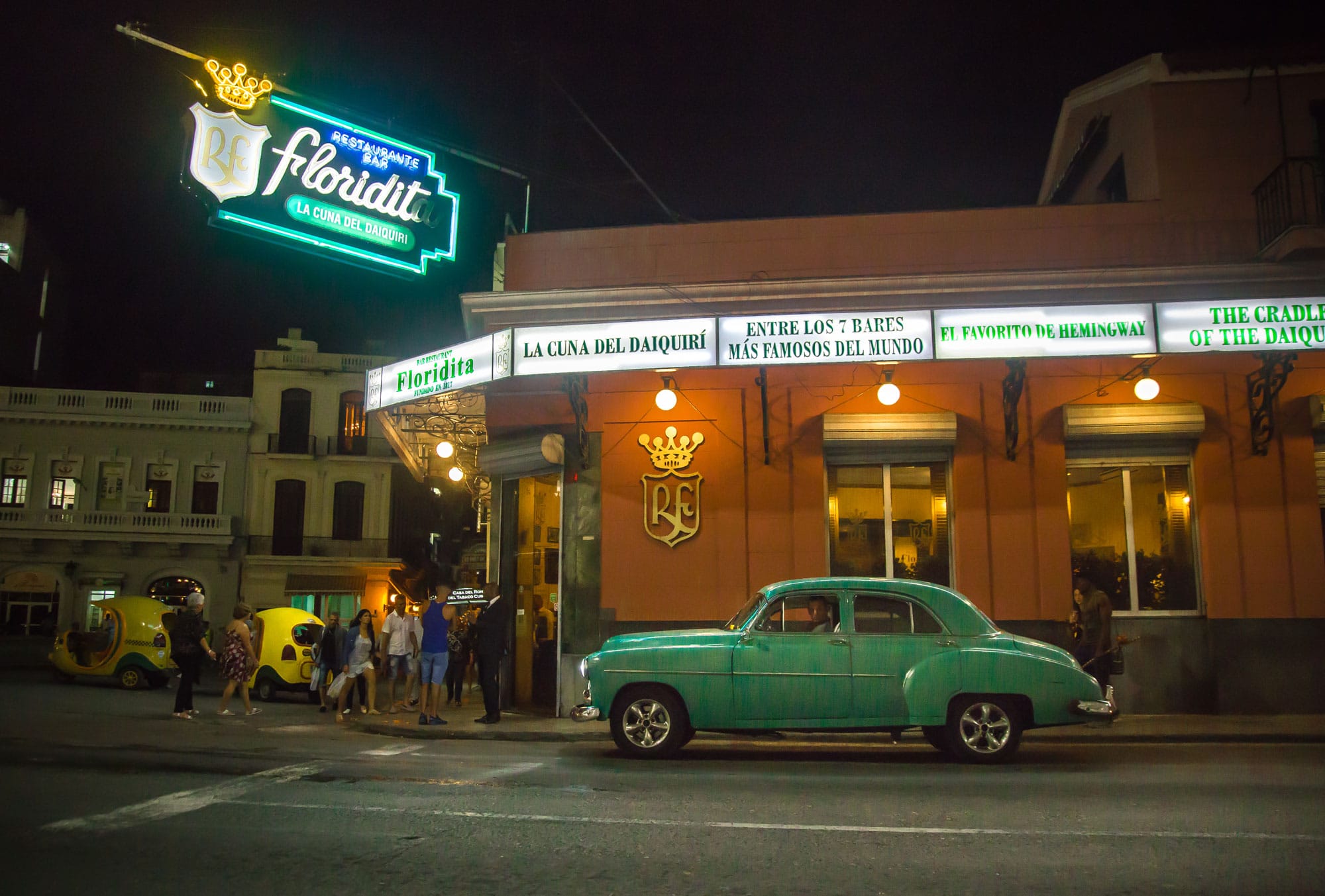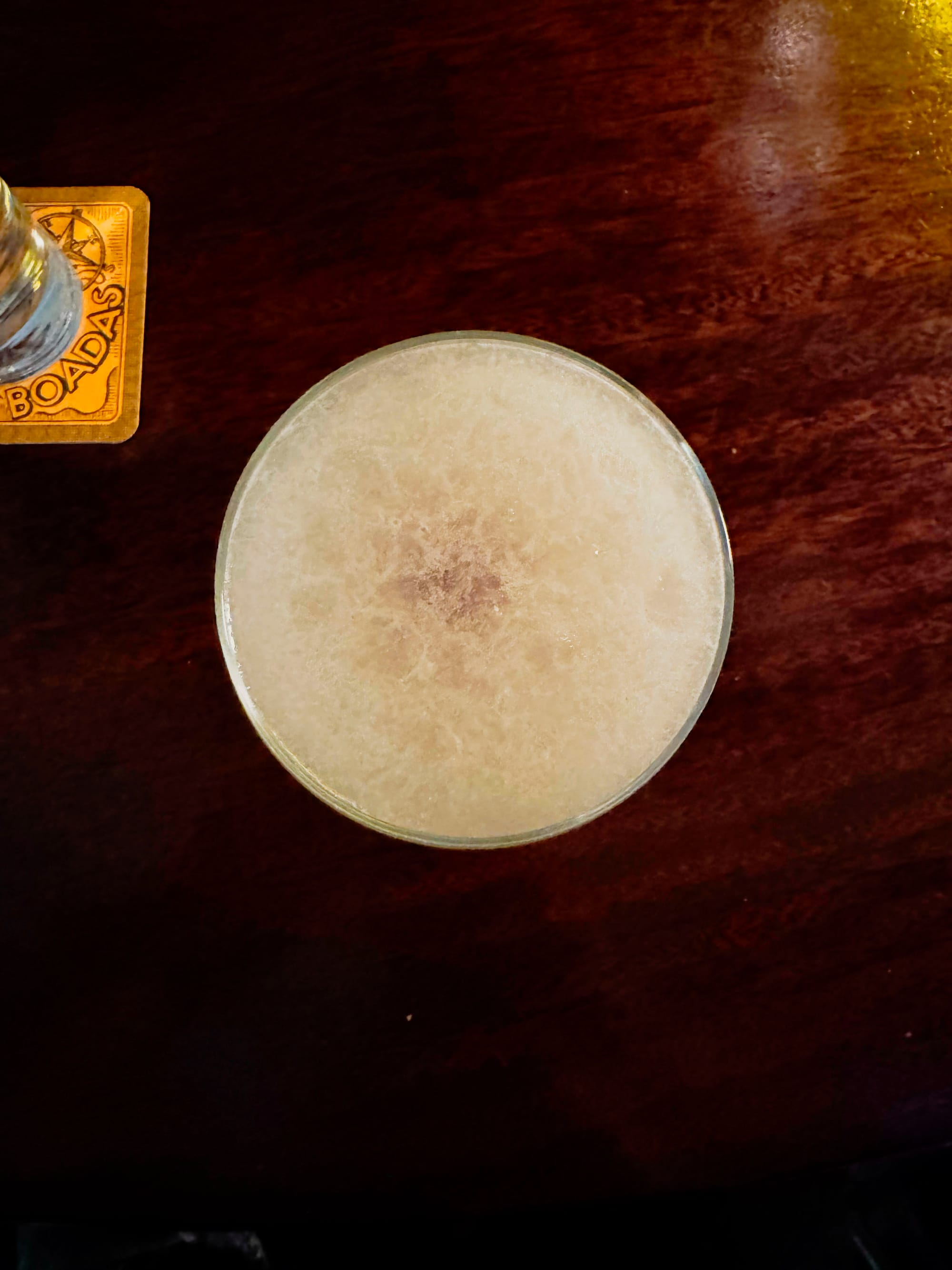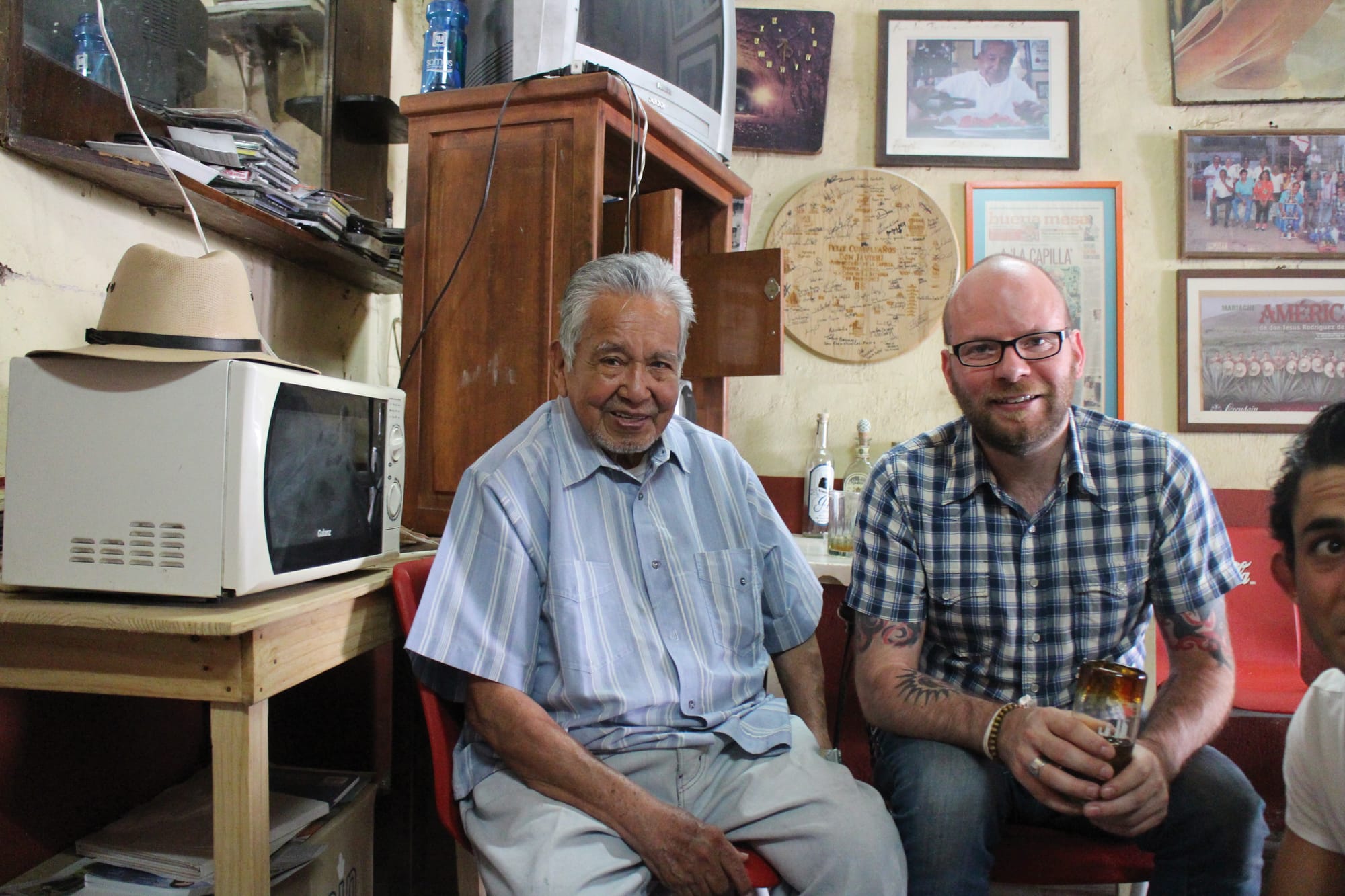Must-visit iconic bars (where the drinks may or may not be good), with Sebastian Cosmo Soto
Plus: Maybe Cocktail Festival highlights, Bar Demo, Sorry Not Sorry and more in this week’s Drinks At Work.

This episode is presented by the Australian return of Speed Rack. Speed Rack is the US-based high-speed bartending competition designed to highlight women and femme-identifying people in the bar industry, all the while raising money for charities supporting breast cancer research — and putting on one big party. And in 2025, Speed Rack is returning to Australian shores with the assistance of William Grant & Sons. Registrations for the NSW and Victorian heats of Speed Rack Australia are open now — the NSW round takes place on Sunday 1st June at Now & Then, with Victoria happening a week later on Sunday 8th June at Goodwater. The fastest two competitors from each state round will go through to the national final in October. Get involved — it’s a great comp for a good cause! Hit the link here to register.
2025 is a tough year to be owning or running a bar. The rent, for one, is too damn high; the spirits you stock the bar with have never been more expensive. But that’s the thing with the bar business — it’s never really been a simple, profitable proposition.
Of course, some bars do better than others; some stick around for a decade or more, and some much-loved bars close — Goodwater co-owner and regular Boothby contributor Fred Siggins has a piece on Good Food this week on this topic.
Few bars, however, get to the 50 year old mark and achieve icon status, and that’s what I talk about with Sebastian Cosmo Soto — co-owner of Double Deuce Lounge and Ramblin’ Rascal Tavern here in Sydney — on this week’s episode of Drinks At Work.
Few bars in Australia make it to the 50 year old milestone, of course, and none have had the kind of influence that comes with a storied place in the history of cocktails and bartending.
There are plenty of Australian pubs that make it to 50 years — Cosmo and I talk about our fondness for The Fortune of War in The Rocks (and the delight of their Guinness) — but in this episode, we wanted to come up with a list of iconic, historic, international must-visit bars for bartenders.
Here’s the list we spoke about — let us know what we missed at sam@boothby.com.au.
Boadas, Barcelona
Boadas is the bar that inspired this chat. Simone Caporale, one of the Barcelona bar’s new owners, was in Sydney for the Maybe Cocktail Festival a couple weeks back, and spoke about the bar at a seminar before getting behind the stick at Maybe Sammy for the Boadas takeover. As I tell Cosmo in the podcast, it was one of my highlights of the week.
Miguel Boadas opened his namesake bar in Barcelona, down a side street off the busy Ramblas, in 1933. Boadas had spent time in Cuba before that, working at El Floridita from 1908 and with Constante Ribalaigua — the guy who made Hemingway his Daiquiris.
When Boadas opened up in Barcelona, he brought with him the throwing technique of chilling and diluting cocktails. I made it there on a visit in 2019, and the jacketed bartenders — some of whom were rather advanced in age — threw their Martinis. It was a good Martini — voluminous, too — but today, Simone has thrown out that technique in favour of a stirred Martini, because as he says, not all drinks benefit from the throwing technique. They were throwing all their drinks at Boadas, not because they made good martinis, but because that’s what Boadas had become famous for.
Boadas today is very much a must visit. Get the Daiquiri — it’s a number four, with a dash of maraschino, with the limes juiced a la minute, the mix shaken very, very hard, and single strained into a chilled glass (and garnished with a cherry). It’s a very good Daiquiri, and one that — as I tell Cosmo — might just be the best I’ve had.

The bartenders now are younger, but better drilled in what makes a cocktail and bar experience great. It’s a more welcoming place today, and that’s no bad thing — even if a part of me misses the arrogance and large, less cold Martinis of the older regime.
El Floridita, Havana
You might know El Floridita as the Havana bar “where Hemingway used to drink his Daiquiri,” as Cosmo says. The owner and bartender from 1918 to the 1950s when he died, Constante Ribalaigua, is known for the frozen Daiquiri #3, with maraschino and grapefruit juice (and for making a sugarless, stronger version for Ernest Hemingway, the Papa Double).
Today, says Cosmo, “it’s a massive tourist trap. It’s one of these bars that are protected, right? But Cuba realises that and will protect this bar.
“You can see the bartenders are all old as shit.”
That’s always a good sign that “they know what they’re doing,” says Cosmo.
The American Bar at The Savoy, London
There’s few bars as iconic as the American Bar still trading today. And whereas some of the drinks from the bars that make this list make drinks the way they did 50 years ago — without the benefits of the cocktail renaissance and the greater understanding of what goes on in the glass that we have today — the same can’t be said for the American Bar. There’s a very up to date list of modern signatures — I’ve had a 20th Century riff that was very modern and pretty delicious.
But the experience at the American Bar, when I have visited at least, leaves a lot to be desired if you ask me. I’ve found it a little full of itself, and get the feeling that the experience you get there very much depends on who you know. (Not that, as I say to Cosmo, that would ever happen in a bar in Sydney, much to his laughter.)
Would I go back though? Absolutely, and I do most times I get to London, because it’s just one of those bars.
The bar opened with the hotel in 1889 in London, and has had influential figures preside over the bar: Ada Coleman (1903-1925), Harry Craddock (1925-1939), Peter Dorelli (1985-2000), and Erik Lorincz (2010-2018) during whose time the bar was named number one on The World’s 50 Best Bars list.
Harry’s New York Bar, Paris
Okay — this is a quintessential tourist trap, at least it has been for years. But I did hear on my recent trip to Paris that effort have been made to improve things at Harry’s New York Bar in Paris, to bring the standards back up to where they might have been back when it was established in 1911.
I loved it, though. I sat in the piano bar downstairs with a couple of friends drinking large Martinis until close — so how bad can it be?
Bemelmans Bar, New York
At the famous Carlyle hotel in New York, you’ll find this iconic bar — iconic, though, for its unique room more than the drinks. The bar dates to 1947, and is named for the creator of the murals that adorn its walls: Ludwig Bemelmans, the author and illustrator of the French children’s book Madeline (not Matilda, obviously, as I say in the podcast).
Tommy’s Mexican Restaurant, San Francisco
Tommy’s Mexican Restaurant in San Francisco might be the youngest entry on this list, but it’s a pretty important place in the history of what we do behind the bar. Back in the 1980s, when Julio bermejo took over the bar at the family restaurant, he started stocking exclusively 100 percent agave tequilas — something we all do today, but wasn’t done at the time. Back then, mixto tequila reigned supreme outside of Mexico. Today it’s a very different world.
The San Francisco neighbourhood bar and restaurant turns 60 years old this year, and as Cosmo and I talk about on this episode, there’s few people more hospitable in this world than Julio. Get the full story from a previous talk I had with Julio for Drinks At Work, here.

La Capilla, Tequila
I’ve had the pleasure to get to this little bar in Tequila town, Mexico, a couple of times over the decade and a half of writing about booze. It’s a bar that has been around since the 1950s, and which I wrote about in a previous role:
“The bar is the oldest in Tequila town, and has become a must-do for any bartender who gets to Tequila. The bar is owned by Don Javier Delgado Corona, who was in his nineties when we visited; when we arrived, Don Javier got up from his seat, despite his age, asked how many people we had with us and started to move chairs around so that we could feel at home. We tried to tell him not to worry about it, but he wouldn’t have it. That’s just the kind of hospitality you get from the man.
The next day we returned, and sat down with him for a drink. Before we knew we had a plate of ham and other snacks in front of us, sharing them with him. I don’t speak a word of Spanish, and it was hard for those that did to hear him. Words weren’t necessary though: I’ve never felt more welcome in a bar than I did there.
La Capilla Cantina Don Javier opened nearly 80 years ago, a couple of blocks down the road from its current location (Don Javier told us that he moved the bar in 1982). And behind the bar, in pride of place above the shelves stocked with tequilas are two photographs of bartenders who have passed away, Gregor de Gruyther and Henry Besant. That tells you a lot about the kind of bar La Capilla has been to the bartending world, and about the kind of man Don Javier is.”
Don Javier passed away in 2020, and a recent look on Instagram sees them serving up their Batangas in plastic cups and branded glassware rather than the nicer, more humble stuff I’d had my Batanga in, but I’ll be heading back the next time I’m round Tequila town.
Dukes, London
Dukes is home to the freezer Martini, a drink which the Maestro, Salvatore Calabrese, lays claim to inventing back when he worked the bar there in the 1980s.
The Maestro left in 1994, and these days the bar is led by Alessandro Palazzi. When I visited last year, he wasn’t there, and I have to say — I didn’t have the best experience. I wrote about it for the first issue of Boothby magazine:
This is my first visit to Dukes. I’ve never been here before, but the Martini is legendary: it’s a freezer Martini, they pour it at the table, and it’ll put you on your arse. Let me at it.
I’m there in a party of three and we arrive at 9:45pm on a Monday night. And boy do they not want us there.
(It’s just the second bar of the night, by the way).
The bartender who greets us at the door is quick to let us know that there is no space — at the same time that a table is getting up having just paid a bill with the man — and that they’re closing the bar at 10pm. But we assure him we’re there just for one Martini, and we’ll be quick. We wait outside for the table to clear out, then head back in — he’s got space. Thank you, I tell him, and he does not give a damn.
Where are those freezer Martinis?
The Martini is cold gin — the vermouth is discarded, some bitters added, and one large triple measure of gin goes straight from the bottle into the chilled glass. Mixing glasses not required. It’s a good glass of frozen gin, don’t get me wrong. And I love the room — there’s no music playing, it seats around 30 people, I love the Martini trolley and long pour. It’s what I’m here for — I’m touristing again, clearly. And I would have loved the place, except for the fact I wasn’t wanted there.
Bars we didn’t touch on, but should probably make the cut:
Harrys Bar Venice
Home to the Bellini, I haven’t been yet. I’ve heard that, much like other bars on this list, its best days are behind it. Every bartender I know who gets to Venice, though, goes there. I’m sure I will, one day, too.
The Long Bar at Raffles
There is probably no classic cocktail more maligned — and more poorly executed — than the Singapore Sling. It’s one of those drinks that were more popular when I came up bartending in the early 2000s, and the recipes for them then were as numerous as they were terrible.
But a visit there a couple years back yielded a better Sling, actually, and I kinda loved the place. It’s historic, probably somewhat problematic with all its colonial associations, and not somewhere I’d go regularly. But after the bar had been reworked by Proof Creative (and led by Jason Williams, who wrote about Pegu Club here and talked about his career working on some of the world’s best bars here), they got the basics right, and whilst it was expensive, it was the kind of touristy bar visit I can definitely recommend.
Okay folks — what bars have we missed? I’m sure there’s plenty, and we’d love to know which ones you think are worthy of icon status at sam@boothby.com.au. We’ll chat about it on the podcast and in a future newsletter.
Press Release Dump
Australian non-ale producer NON has picked up an award: their NON 1 Salted Raspberry & Chamomile won Gold at the World Alcohol-Free Awards in London, marking a major victory for the brand.
Tailor Room is a new 20-seat cocktail bar that opened on April 11th as part of The Collective, a mini hospitality precinct in The Rocks in Sydney. The bar offers a carefully curated cocktail menu featuring 10 signature drinks inspired by fabrics. We are yet to check it out, but stay tuned.

